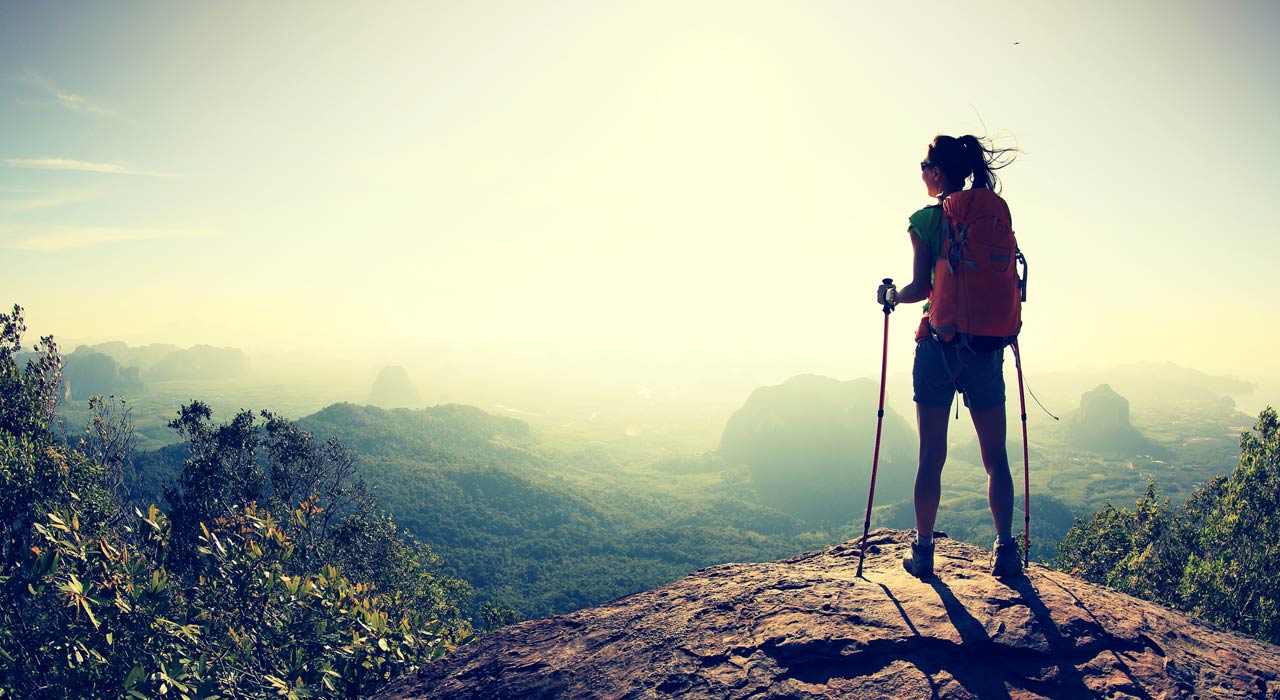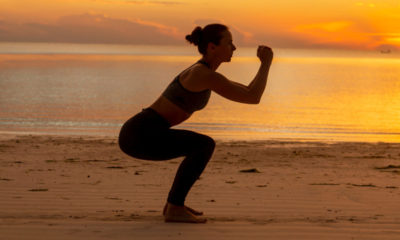Fitness
Can Adventure Holidays Improve Your Fitness?
The horse’s hooves are swishing through the long grass, her long tail flicking at irritating insects as we climb up the hill. To our left, women brandishing scythes to cut the parched vegetation look up from their labor to stare at us, while to our right lies some of the most breathtaking scenery I have ever seen.
Under the blue, blue South African sky, rise gargantuan, craggy mountains while glistening lakes, green pine forests and solitary acacia trees among fields of shimmering gold fill the foreground. I nearly have to pinch my arm to remind myself it’s not a painting, but fortunately, my steed, Cleopatra, is insatiably hungry and jerks me out of my reverie as she pushes her head to the ground to graze.
I am in the Drakensberg Mountains and I’m hooked before I arrive thanks to the Game of Thrones-esque name which translates from Dutch to Mountains of Dragons. If adventure can’t be found here, where can it?
I am convinced that from horseback is the best way to explore the area. The animals follow the trail faithfully – clearly accustomed to the well-trodden route – as I ogle the vista in fascination, crying: “Wow!” at every turn.
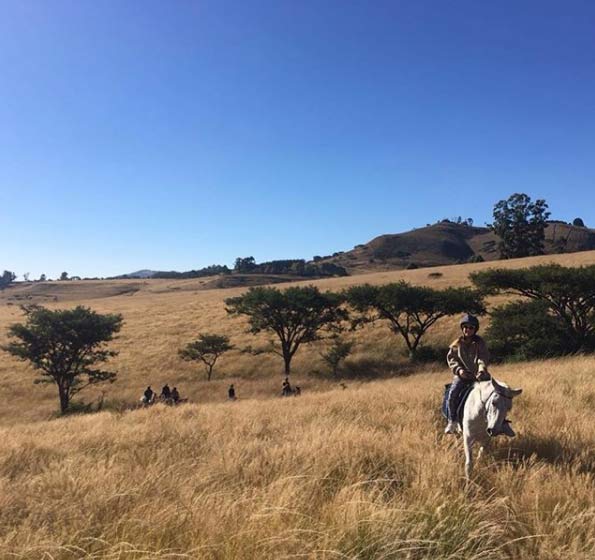
Not only does riding a horse offer an elevated view, but it actually provides a surprisingly good workout. An hour of horse-riding can burn around 350 calories, according to MyFitnessPal, and is great for toning muscles as you’re required to relax and contract according to the mount’s movements. It can also improve balance, flexibility and co-ordination.
According to research undertaken by the University of Brighton and Plumpton College on behalf of The British Horse Society, general horse riding energy expenditure levels are clearly within the moderate intensity exercise band. I find this easy to believe as I climb off Cleopatra several hours later, my legs aching from the morning’s exertion and ready for a relaxed lunch.
The workout does not stop there, however. In the afternoon, we head to Giant’s Castle, an impressive mountain peak hiding centuries-old rock art.
As ever in South Africa, the scenery around us is as staggering as it is varied. The sun toasts us as we walk along a grassy slope, a cascading river rushing below, but in the distance, dramatic snow-topped rocks serve to remind us of the further opportunities for epic climbing.
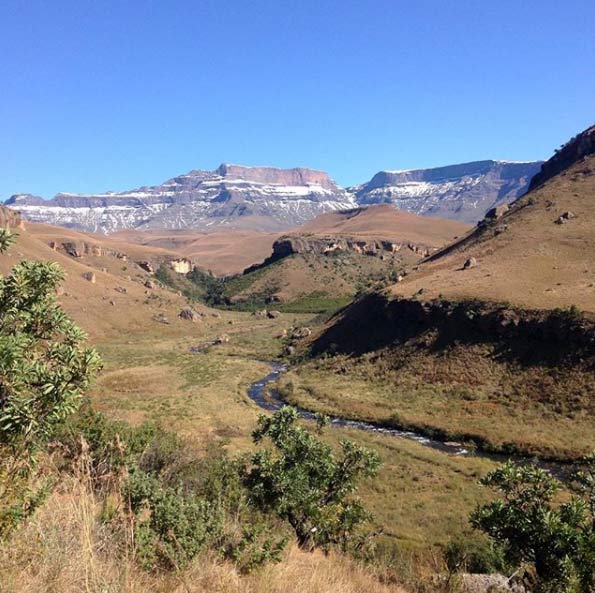
Shortly, we plunge into the cool undergrowth as we cross enchanting wooden rickety bridges before hiking upwards again through the bush to the overhanging rocks where just a selection of the rock art, drawn by bushmen, can be admired. It’s incredible how well-preserved some of them are, although the presence of painted guns reminds us that some were drawn as recently as the 19th Century, while others date back about 800 years. Ingredients used by the 4ft bushmen to daub the walls include blood, gall, egg white and ochre.
The guided tour is brief, however, and soon we are back out on the mountainside, the scorched brown grass ahead of us resembling the coarse hide of a horse, as we trek back.
There are ample opportunities for rambling in this part of the world and it’s the perfect activity to brush up on South Africa’s marvelous array of flora and fauna. On average, hiking burns up around 250 miles an hour and offers a gruelling whole-body workout if sharp inclines and clambering over rocks is involved. Regular trekking can help improve cardiorespiratory fitness and muscle strength as well as preventing and controlling diabetes.
It goes without saying of course that simply being outside can do you an awful lot of good. Research shows that spending time al fresco increases attention spans and creative problem-solving skills by as much as 50%.
What better way to continuing enjoying the great outdoors – but without the exertion (I deserved a rest I thought) – than trying out safari? You may be sitting down in a vehicle but you’re still getting plenty of fresh air and vitamin D to help build up the immune system. If you avoid South Africa in the rainy season (November to March) you’re pretty much guaranteed sunshine.
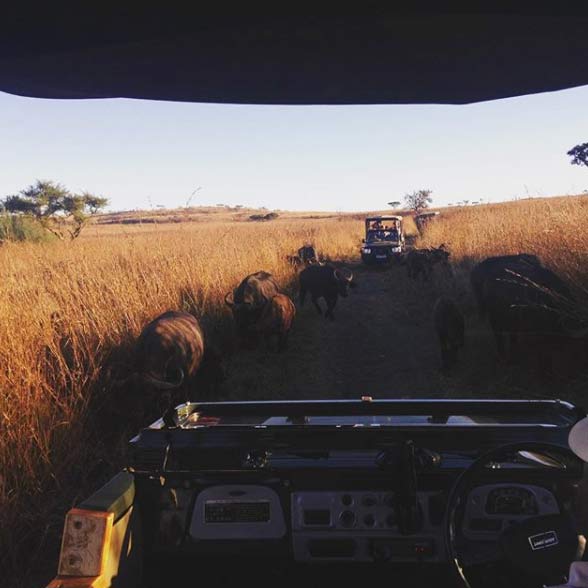
There are numerous emotional benefits, too, as the excitement of seeing the majestic wild beasts – elephants, buffalo, impala, you name it – will increase serotonin levels along with other feel-good endorphins that will reduce stress and improve positivity.
I feel pretty high on life as I stare so hard at the animals roaming the Nambiti Game Reserve I think my eyeballs will pop out.
We see hippos all but submerged in the water as they try to cool down, zebras grazing in groups and kudu leaping gracefully along the hillside. But the most astonishing sight of all is a female lion and two cubs ripping bloody flesh off a freshly killed kudu carcass – talk about the circle of life.
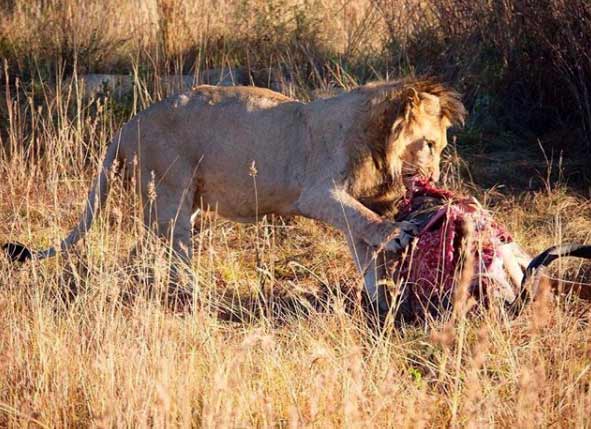
After lakeside gin and tonics as the sun sets, we head back to Esiweni Luxury Safari Lodge where we are to spend our last night in South Africa. The lodge teeters above a clifftop and has spectacular views of the gorge and surrounding scenery. There are just five individual suites here and I take a glass of traditional Amarula cream liqueur out onto my personal balcony after dinner.
I can hear the river burbling beneath and insects chirping, but mostly I just hear silence. I look up. The midnight sky has been dusted, as though by a painter’s brush, with billions upon billions of stars. Here, in the southern hemisphere, the Milky Way twinkles in all its glory and I feel absolutely minuscule. Now that’s what I call an adventure.
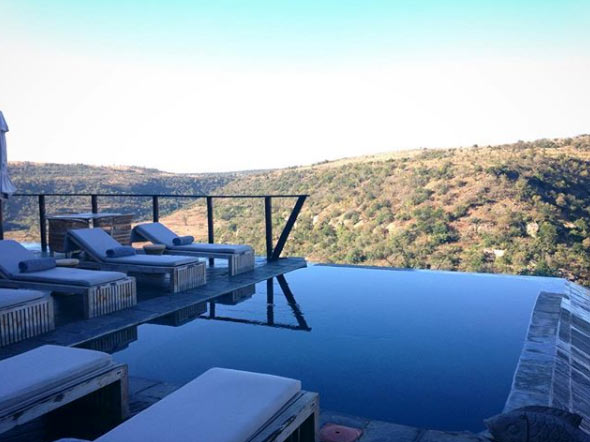
TRAVEL FACTS
Harriet travelled courtesy of South African Tourism –www.uk.southafrica.net and flew to South Africa with South African Airways – www.flysaa.com


